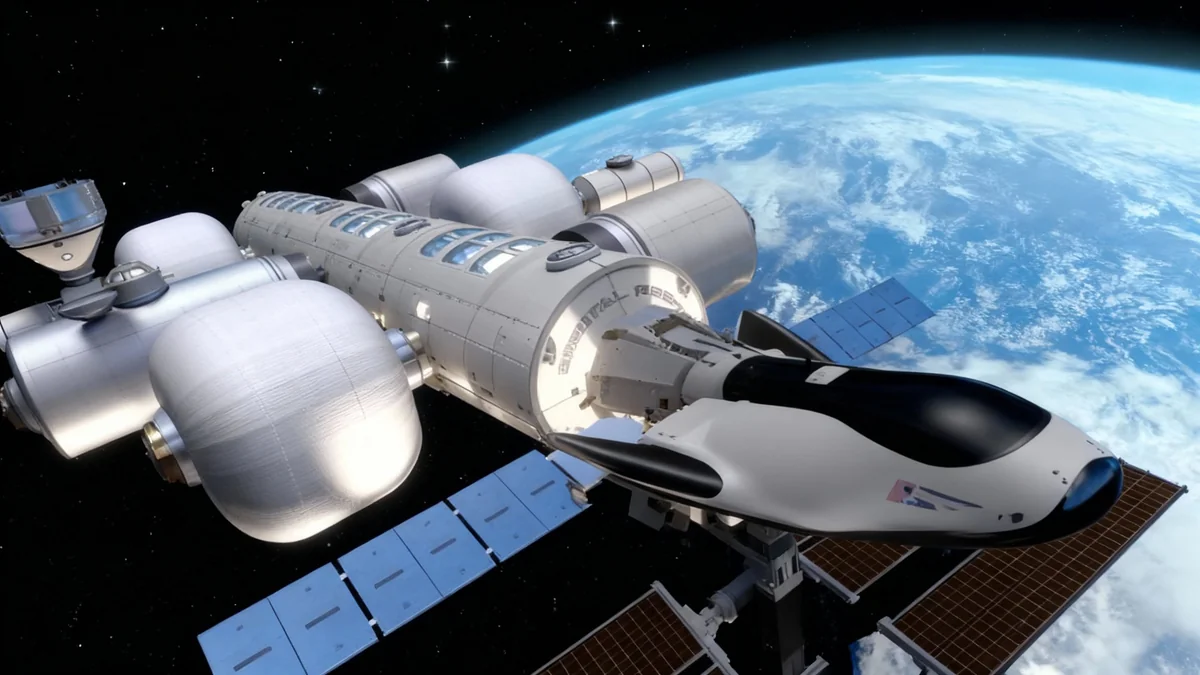In the rapidly evolving space launch market, a single question dominates industry conversations: How do you compete in a world with SpaceX's Starship? At a recent gathering in Silicon Valley, leaders from established and emerging launch companies outlined their strategies for survival and growth in the shadow of the super-heavy-lift rocket.
From legacy providers like United Launch Alliance (ULA) to agile startups such as Stoke Space, the focus is on increasing launch frequency and carving out distinct market niches. The consensus is clear—profitability depends on a higher cadence of missions, a goal shared by all, though pursued through different technological and business approaches.
Key Takeaways
- Launch companies are prioritizing an increased launch cadence as the primary path to profitability.
- Strategies vary widely, from ULA's established reliability to startups like Stoke Space developing novel reusable technologies.
- SpaceX's Starship is forcing the entire industry to innovate and define its value proposition beyond simply lifting mass to orbit.
- European provider Avio is targeting up to six Vega-C launches per year to meet market demand and ensure financial viability.
The Looming Presence of Starship
The space launch industry is undergoing a fundamental transformation, driven largely by the development of SpaceX's Starship. This fully reusable super-heavy-lift vehicle promises to dramatically lower the cost of access to space, creating both immense opportunities and significant challenges for other providers.
During Silicon Valley Space Week, the topic was unavoidable. Executives from across the sector addressed how their companies plan to operate and thrive in this new environment. The pressure is on to demonstrate not just technological capability, but a sustainable business model that can withstand the market disruption Starship represents.
Understanding the Market Shift
SpaceX's Starship is designed to be the largest and most powerful rocket ever built, capable of carrying over 100 metric tons to low Earth orbit. Its key innovation is full and rapid reusability, which aims to reduce launch costs by orders of magnitude. This potential shift is forcing competitors to re-evaluate their own cost structures, launch rates, and target markets.
The core issue for every company is how to secure a profitable share of the market. While not every mission requires a rocket the size of Starship, its potential low cost could allow it to capture a wide range of payloads, from large constellations to smaller satellites that can be rideshared.
Strategies of Established Players
For long-standing companies, the strategy involves leveraging their track record of reliability while adapting to the new market dynamics. They are not necessarily trying to compete with Starship on size, but on mission assurance and a steady, predictable launch schedule.
United Launch Alliance (ULA)
United Launch Alliance, a joint venture of Boeing and Lockheed Martin, has been a cornerstone of U.S. national security launches for years. The company is transitioning to its new Vulcan Centaur rocket, which is designed to be more capable and cost-effective than its predecessors, Atlas V and Delta IV. ULA's strategy hinges on its reputation for reliability, a critical factor for high-value government and military payloads.
Avio SpA
Across the Atlantic, Italian aerospace company Avio is also focused on increasing its operational tempo. As the prime contractor for Europe's Vega-C rocket, Avio is responding to the demand for small- to medium-lift launch services.
An official from Avio stated that the company's target is to achieve a cadence of up to six Vega-C launches per year. This rate is seen as essential for meeting customer needs and achieving profitability for the program.
This focus on cadence underscores a broader industry trend. For providers of smaller rockets, flying frequently is the only way to generate sufficient revenue to cover fixed costs and invest in future development. It also allows them to offer more flexible scheduling for satellite operators.
Innovation from the New Generation
While established players adapt, a new wave of startups is building their business models from the ground up to address the modern space economy. These companies are often more agile and are embracing reusability and novel manufacturing techniques from their inception.
"The entire industry is grappling with two fundamental questions: how to increase launch cadence to ensure profitability, and how to define a competitive edge in the era of Starship."
Firefly Aerospace
Firefly Aerospace is one of the prominent new players aiming to secure a foothold in the small- and medium-lift market. With its Alpha rocket, the company is focused on scaling its manufacturing and launch operations to achieve a high flight rate. Like Avio, Firefly understands that volume is key to its business model.
PLD Space and Stoke Space
Startups are also pushing the boundaries of technology. Spain's PLD Space and U.S.-based Stoke Space are both developing reusable rockets, but with different approaches. PLD Space is focused on reusable first stages, a now-proven concept.
Stoke Space, however, is taking on a more ambitious challenge: developing a fully reusable second stage. This is a technically complex endeavor that, if successful, could offer significant advantages in cost and operational efficiency for deploying payloads into specific orbits. Their approach highlights the diverse paths companies are taking to find a competitive advantage.
The Common Denominator: Launch Cadence
Despite their different technologies, scales, and target markets, a common theme emerged from the discussions at Silicon Valley Space Week: the critical importance of launch cadence. A high flight rate is no longer a goal but a requirement for survival.
Here’s why cadence is so crucial:
- Economic Viability: Launch providers have massive fixed costs, including manufacturing facilities, launch pads, and skilled personnel. Spreading these costs over a larger number of launches is essential to lower the price per launch and achieve profitability.
- Market Responsiveness: Satellite operators, particularly those building large constellations, require frequent and reliable access to space. A provider that can launch on a regular, predictable schedule is far more attractive to these customers.
- Manufacturing Efficiency: A steady production line is more efficient than building rockets intermittently. A higher cadence drives down unit costs through economies of scale and learning curve improvements.
The challenge for all these companies—from ULA to Stoke Space—is to transition from developing a rocket to operating a reliable, high-frequency launch service. This involves streamlining manufacturing, perfecting launch-site operations, and securing a steady manifest of customers. In the age of Starship, standing still is not an option; the race is on to fly faster and more often than ever before.





